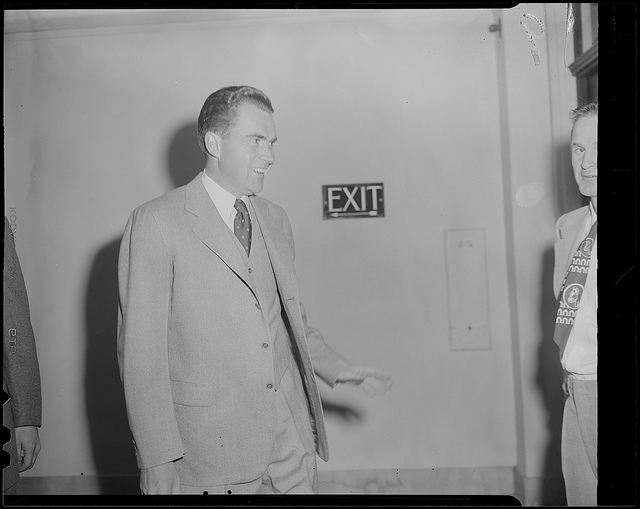At a 6:30pm talk with reporters at the (now old) Officers Club in Guam on the 25 July 1969, President Nixon changed Australian defence policy. He announced that in future countries fighting internal threats should provide the bulk of the defending armed forces. America would provide logistic support and sell the necessary arms, but the threatened nation should now primarily rely on its own combat forces not those of America. In short, it should be self-reliant.
And so, after due allowance for consideration and inertia, Australia decided to embrace this new Guam (or Nixon) Doctrine. While Nixon’s declaration was a bit vague about combat support forces, the need to now provide the bulk of the actual combat forces for self-defence seemed plain enough. Such is the big impact of big allies. But has the Guam Doctrine passed its used by date and is the Doctrine’s concept of self-reliance still a sensible basis on which to construct modern Australian defence policies?
Before going further, it must be borne in mind that the Guam Doctrine was never really meant to apply to Australia, or indeed to America’s NATO allies. In Guam the President was talking principally about getting US land forces out of Vietnam as quickly as possible. In his more formal ‘Silent Majority’ speech on 3 November, the Korean War of 15 years earlier was also invoked to support his earlier non-quotable remarks made at the Guam Officer’s Club. The Korean and Vietnam Wars though were wars between divided parts of once single countries. The conflicts were both part of and subject to the Cold War containment grand strategy.
Mainland Asia was a special case, although Nixon spent the rest of his Presidency reassuring worried Asian allies that his words shouldn’t be taken too literally and that America would of course support them. Nixon’s grand strategist, Henry Kissinger, kept restating that the Doctrine related solely to countries threatened by ‘internal subversion’; interstate warfare was a different matter entirely. Writing twenty years later historian Jeffrey Kimball, with the benefit of considerable hindsight, summed the Guam Doctrine up as a ‘saga of misunderstandings‘.
Fast forward to the second decade of the 21st century and the world’s very different. The USSR collapsed more than 20 years ago, Vietnam is now keen to be an American ally and Henry Kissinger now runs a New York-based international consulting firm. Although, to be fair, Henry was as surprised as anyone by Nixon’s Guam Officers Club talk.
In this modern era of globalisation, as George W. Bush nicely said it: ‘[we are] threatened less by conquering states than we are by failing ones’. Communists no longer intervene in unstable states; we do—on humanitarian Responsibility To Protect grounds. Our military forces are accordingly very different to those of half a century ago. Today’s military forces rely on unconstrained access to complex global supply chains for pretty much everything. They’re certainly in no way self-reliant, and this extends to people.
The Iraq and Afghanistan Wars were only practical because of the ability of the American-led coalition to hire contractors from around the globe in vast numbers. This wasn’t just the proverbial ‘cooks and bottle washers’ but rather extended to areas like those undertaking and guarding the very large numbers of critical resupply convoys, and flying in-country tactical reconnaissance drones. More confusingly, this is the era of ‘reach-back warfare’ in which frontline forces continuously access assets half a world away. The extensive use of Predator and Reaper drones controlled from Las Vegas and used to support troops in contact in battlefields in Afghanistan is a classic example of this. The world of Nixon’s Vietnam War with its tidy distinctions between deployed American and local military personnel now seems so last-century.
If the Guam Doctrine’s formulation now appears passé, there’s still a real message in its intent. The Doctrine was conceived as part of the US management of its Asian mainland allies in accordance with the containment doctrine of the time. It was to allow America to withdraw from and subsequently play a smaller part in Asia. America has similar needs to manage its Allies today, except now it wants to pivot towards—rather than away from—Asia. Air-Sea Battle is the latest fashion in operational concepts and, rather than us being self-reliant, the Pentagon now wants close allies to be deeply involved. The White House is also encouraging allies to play a part in the American re-balancing grand strategy (PDF) as it evolves. The soon-to-be 2,200 Marines in Darwin speak for themselves as far as America now sees Australian territory as important to its military posture. In a way, the defence of Australia is now too important for Australians alone—the complete reverse of Nixon’s rationale for the Guam Doctrine and a quick American departure.
The 2013 Australian Defence White Paper once again brought up the notion of self-reliance (see para 3.36). There are surely more useful and relevant contemporary concepts that could provide a sounder intellectual basis for contemporary Australian defence policies than this aging relic from the previous century. Perhaps the next White Paper could strike a blow for modernity, bury self-reliance and move decisively into this century.
Peter Layton is undertaking a research PhD in grand strategy at UNSW, and has been an associate professor of national security strategy at the US National Defense University. Image courtesy of Boston Public Library.


